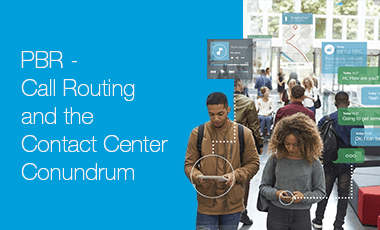Source: Saddletree Research
Source: Saddletree Research
Despite the growth of digital channel support, the reality is that 70 percent of the industry experienced call volumes the same or greater than they experienced in the previous 12 months. Voice communications still dominate customer service, yet call routing strategies represent one of the industry’s most, if not the most, neglected CX processes. Thus, our conundrum. Effective call routing is critically important to today’s CX, yet it has been allowed to grow old and tired and woefully inefficient.Figure 3, below represents the state of the art in terms of the distribution of call routing strategies in 2019.Figure 3: Customer Call Routing Strategies – 2019Source: Saddletree Research
As the data indicates, the contact center is stuck firmly in the 1990s when it comes to call routing strategies. There is, however, a recent innovation that promises to push customer call routing swiftly into the 21st century.Predictive Behavioral Routing represents the first major innovation in customer call routing since skills-based routing was introduced in the early 1990s. It is a welcome addition to a contact center technology segment that has been inexplicably overlooked for too long.Grounded in analytics and constantly fine-tuned by machine-learning-based artificial intelligence (AI), Predictive Behavioral Routing communicates with the ACD to intelligently route calls to the best available agent based upon customer personality, behavioral data, and communications preferences. Predictive Behavioral Routing relies on proprietary behavioral modeling along with the industry’s largest database of customer behavioral profiles in order to send calls to the agent whose skills and ability best match the profile of the customer initiating the call.The net result of Predictive Behavioral Routing’s modernization of call routing strategies is a reduction in customer effort, increased first call resolution (FCR), and decreased average handle time (AHT). An added bonus is the job satisfaction agents achieve when helping customers they are more likely to be successful with.Predictive Behavioral Routing is delivered via the cloud as a software service and all the benefits of the cloud contact center such as cost savings, flexibility, ease of maintenance, and unprecedented reliability, are inherent in the product. Predictive Behavioral Routing is ideally suited to meet the needs of the new generation of customers and workers, and gives the contact center industry a much-needed alternative to traditional call routing technologies.To read more about Predictive Behavioral Routing visit our webpage.



